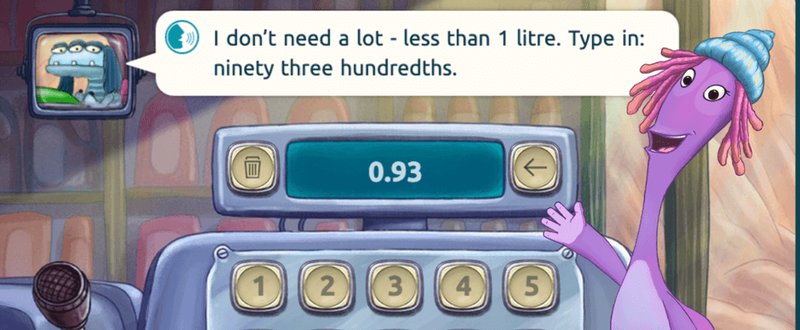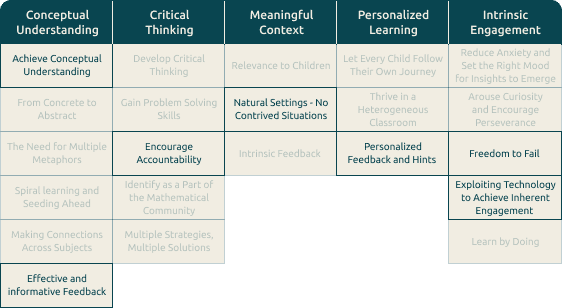
Activity spotlight - Gasoline Decimals
Purpose of this episode
Use decimals to represent quantities described with words.
Description
Children help the customers in a gas station to pay by typing the decimal number they read.
Watch video walkthrough
Mathematical Background
The usual way to represent whole numbers is through the decimal system. For example, when we write 547, we represent a number made out of 5 hundreds, 4 tens, and 7 ones. For non-
whole numbers, we introduce more digits to the right of the ones digit to signify tenths, hundredths, thousandths, and so on. Decimal numbers are all around us - numbers like 4.5 on road signs or 8.99 on price tags, for example.
Many difficulties arise when children learn how to expand the decimal representation to non-whole numbers. For example, although they’ve already encountered similar phenomena working with whole numbers, it’s often challenging for students to understand that 8 tenths and 7 hundredths and 87 hundredths both mean 0.87. It is therefore important to acknowledge that while
this system is widely used, it is far from trivial to understand. Conceptual understanding of the system must be a precursor to more advanced aspects like comparison or operations with decimal numbers.
What makes it great?
The setting engages children in a meaningful way.
The gas station is a natural setting in which the conversion between the verbal and symbolic representations of decimal numbers has real significance to the characters. The child’s role in helping the gas station attendant encourages accountability. And the interaction with the cash register exploits technology to further engage users within the story.
The episode addresses common misconceptions.
Each question posed addresses some aspect of the conceptual understanding of the decimal system necessary to truly understand decimal fractions. Within the frame of conversion between verbal and symbolic representations, the episode addresses the underlying understanding and frequent misconceptions that alternately support or hinder children’s understanding of future topics with decimals.
The feedback helps children achieve understanding, not just answer the question.
The episode allows for the freedom to fail and to learn from mistakes by providing effective and informative wrong answer feedback that focuses on the misconceptions underlying errors. Additionally, the particular hints given are personalized to address a child’s specific error.
Consonance with Our Pedagogical Principles

